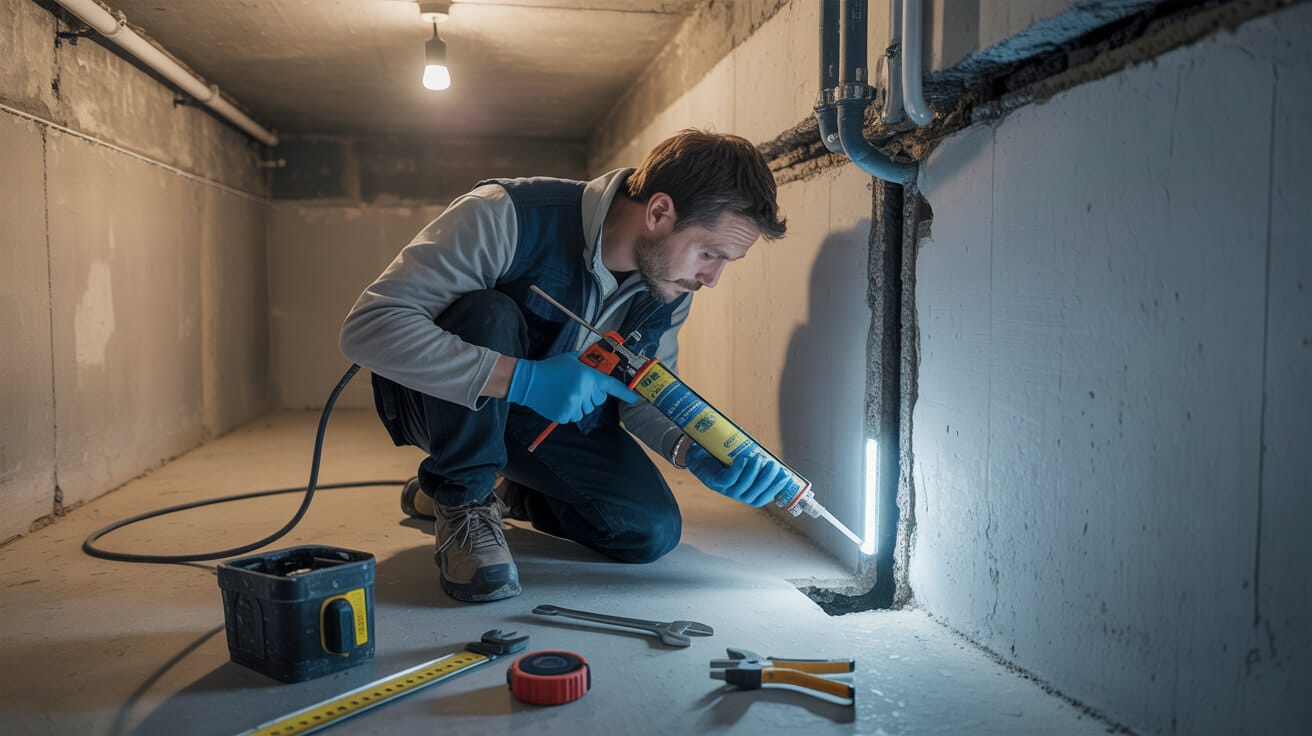 A Landlord’s Guide to Insurance for Plumbing Issues in Rentals
A Landlord’s Guide to Insurance for Plumbing Issues in Rentals

Will Your Landlord Insurance Really Protect You When Plumbing Problems Destroy Your Plans?
Every landlord believes they’re covered—right up until the night a tenant calls about water pouring through the ceiling. In that moment, theory meets reality, and your policy wording matters more than you ever imagined. In UK rentals, insurance language like “escape of water” feels reassuring until the payout lands short, leaving you with the bill for new pipes, compliance upgrades, or missed tenant rent.
A hidden gap in your policy can turn a slow leak into thousands in losses—and you’ll only discover it after disaster strikes.
For property owners, letting agents, landlords, and portfolio managers, understanding what landlord insurance protects—and crucially, what it never covers—is the real defence. The difference between a paid claim and a personal loss comes down to details: timing, paperwork, engineer credentials, tenant notification, and proof of compliance, not just how quickly you ring your insurer. Recognising what you’re exposed to before a crisis can be all that stands between you and a financial shock.
The Confidence Trap In Landlord Insurance
Too many landlords make the same mistake: thinking that any kind of leak, burst or plumbing “incident” is someone else’s financial responsibility. The legal fine print says otherwise. Insurance is an after-the-fact resource, shaped by clear rules—accidental damage is in, neglected maintenance is out, and every claim is a test of your operating system as much as property condition.
Key insight: If you don’t sweat the small compliance details now, you’ll face a much bigger reckoning later—one that could cost you five figures, plus tenant trust and future insurability.
What Plumbing Issues Does a Standard Landlord Policy Actually Cover?
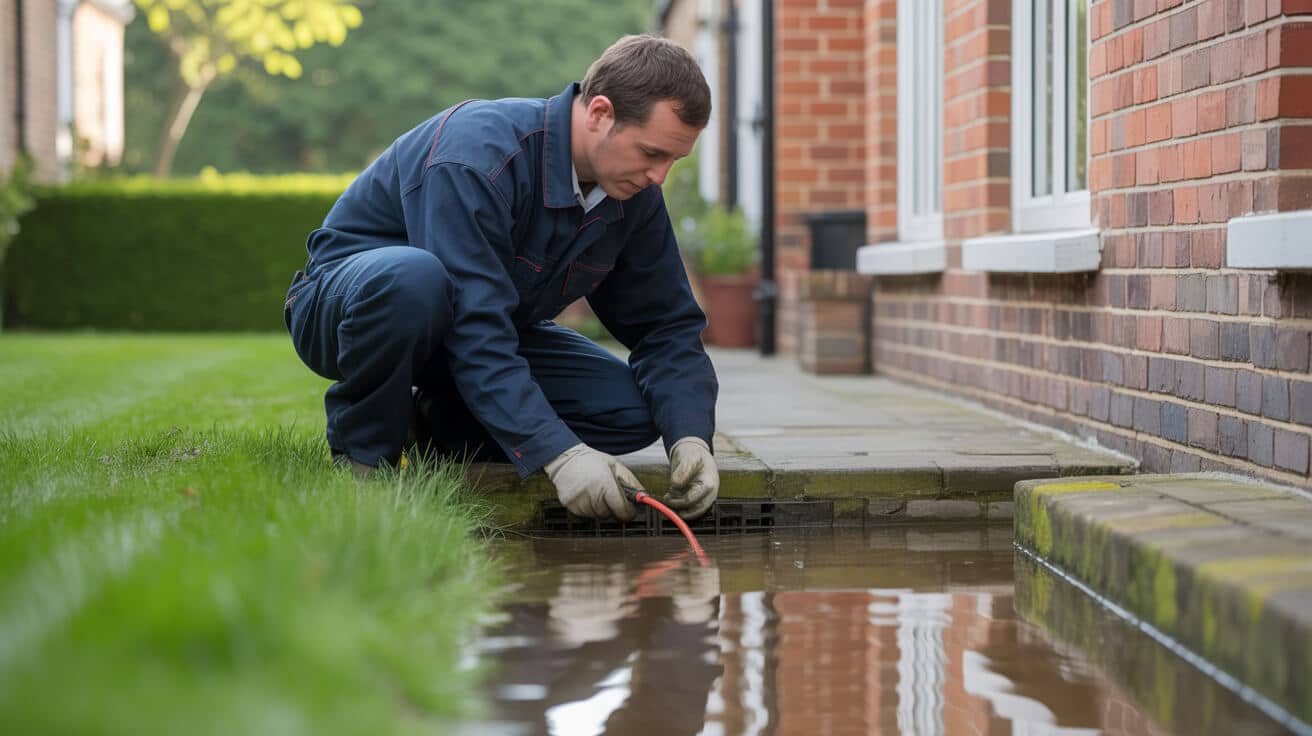
Scroll through a typical landlord policy and you’ll see phrases engineered to look comprehensive. In reality, the common protections are tightly defined—and the exclusions are broad enough to surprise even the savviest owner. Understanding these boundaries is the starting point for making your insurance actually work in your favour.
Frequently Included:
- Sudden “escape of water” events: A burst pipe brings down a ceiling or floods a flat overnight? Most policies will cover the property damage—but not the pipe repair itself ([simplybusiness.co.uk](https://www.simplybusiness.co.uk/landlord-insurance/faq/what-does-landlord-insurance-cover/?utm_source=openai)).
- Internal pipes within the property boundary: If the issue is sudden and within your legal responsibility line, you have a fighting chance. Leaks from a neighbour or outside the property line get complicated ([letsinsure.co.uk](https://www.letsinsure.co.uk/home-emergency-insurance?utm_source=openai)).
- Some fixtures, scant contents: Only landlord-supplied contents covered if you’ve explicitly taken out contents insurance ([directlineforbusiness.co.uk](https://www.directlineforbusiness.co.uk/landlord-insurance/cover/landlords-buildings-insurance?utm_source=openai)).
Consistently Excluded or Under-Insured:
- Gradual leaks or “hidden damage”: Slow issues are treat as neglect and almost always lead to claim denial.
- Wear and tear: Corroded or aged pipes and appliances are flagged as maintenance, not insurable loss ([homeprotect.co.uk](https://www.homeprotect.co.uk/landlord-insurance/landlords-home-emergency-cover?utm_source=openai)).
- The cost to actually fix the pipe, tap, or fitting: Unless you bolt on Home Emergency cover, the “make good” costs are almost always on you ([moneysupermarket.com](https://www.moneysupermarket.com/landlord-insurance/landlord-emergency-cover/?utm_source=openai)).
- Trace & Access: Most policies treat the detective work (e.g., opening up floors, walls) as an optional extra you needed to select in advance ([paylovesmith.co.uk](https://www.paylovesmith.co.uk/news/trace-and-access-cover-explained/?utm_source=openai)).
- External responsibility line: Issues within communal or mains lines, especially in flats or commercial buildings, may fall outside your insurable scope.
The peace of mind you feel with insurance is only as solid as your evidence—your paperwork, your process, your diligence in reading the exclusions before they read you.
Why You Can’t Assume Coverage
It’s a bitter pill: policy terms favour insurers’ definitions, not your expectation of “fairness.” Standard policies are built for visible, sudden, accidental damage inside the property. Everything else—across plumbing, heating, drainage, or leaks that build up—is at best a grey area, and at worst, a black hole in your finances.
When Will Your Insurance Pay Out for Water Damage—and When Will It Refuse?
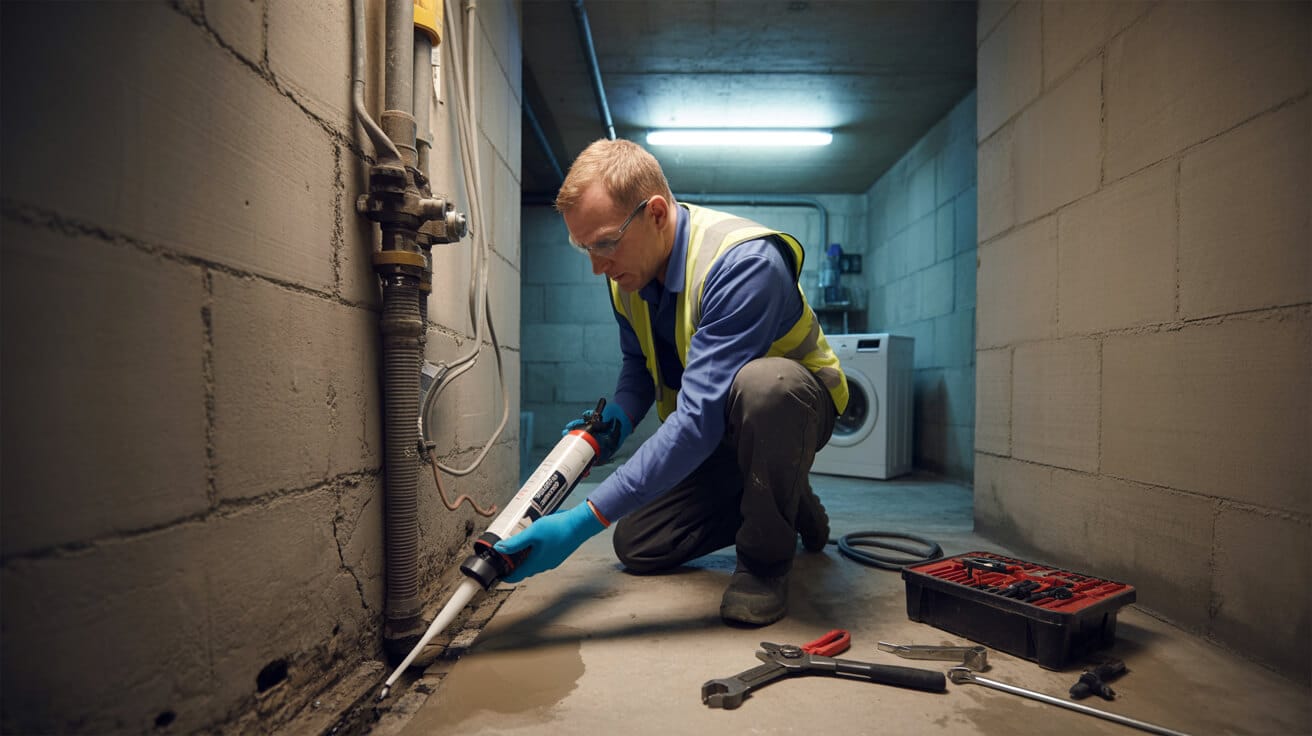
Water is relentless. A sudden burst causes chaos, but slow drips can destroy subfloors, electrics and tenant relationships. Insurers make a hard distinction between crisis and creeping disaster.
- Sudden, catastrophic, visible: If a pipe bursts unexpectedly and soaks property, that’s the classic “escape of water” the policy is designed for.
- Creeping, hidden or ignored: If a small leak is found long after it started—and there’s evidence of missed inspections or ignored tenant complaints—the claim is typically refused.
Insurers reward urgency and process but punish delay, incomplete records, and reactive management.
High-Risk Exclusion Zones
- Wear-and-tear exclusions: Anything resulting from corrosion, limescale, long-term scale, or general age will be flagged and denied.
- Neglected leaks: Hidden problems you or your agent should have noticed—mould, persistent smells, unexplained damp—that went unlogged or unreported for months are classed as owner neglect ([aviva.co.uk](https://www.aviva.co.uk/insurance/home-products/landlord-insurance/landlords-insurance-cover-guide/?utm_source=openai)).
- Boiler or appliance failure: Unless you’ve taken out dedicated boiler or appliance breakdown insurance, any related claim is rejected ([britishgas.co.uk](https://www.britishgas.co.uk/home-services/landlords/boiler-and-central-heating-cover.html?utm_source=openai)).
- Trace & Access omitted: Skipping this bolt-on exposes you to big costs in simply finding the cause ([paylovesmith.co.uk](https://www.paylovesmith.co.uk/news/trace-and-access-cover-explained/?utm_source=openai)).
The Proof Insurers Seek
- Did you log regular inspections with timestamped upload or engineer-signed records?
- Are all works (even emergencies) documented by WRAS/WaterSafe/G3-accredited tradespeople?
- Do tenant notification records exist—with dates, times and photos?
Insurers trust a paper trail over promises. Evidence is your only defence against the “longstanding damage” exclusion.
What Does Home Emergency Plumbing Cover Actually Change for Landlords?
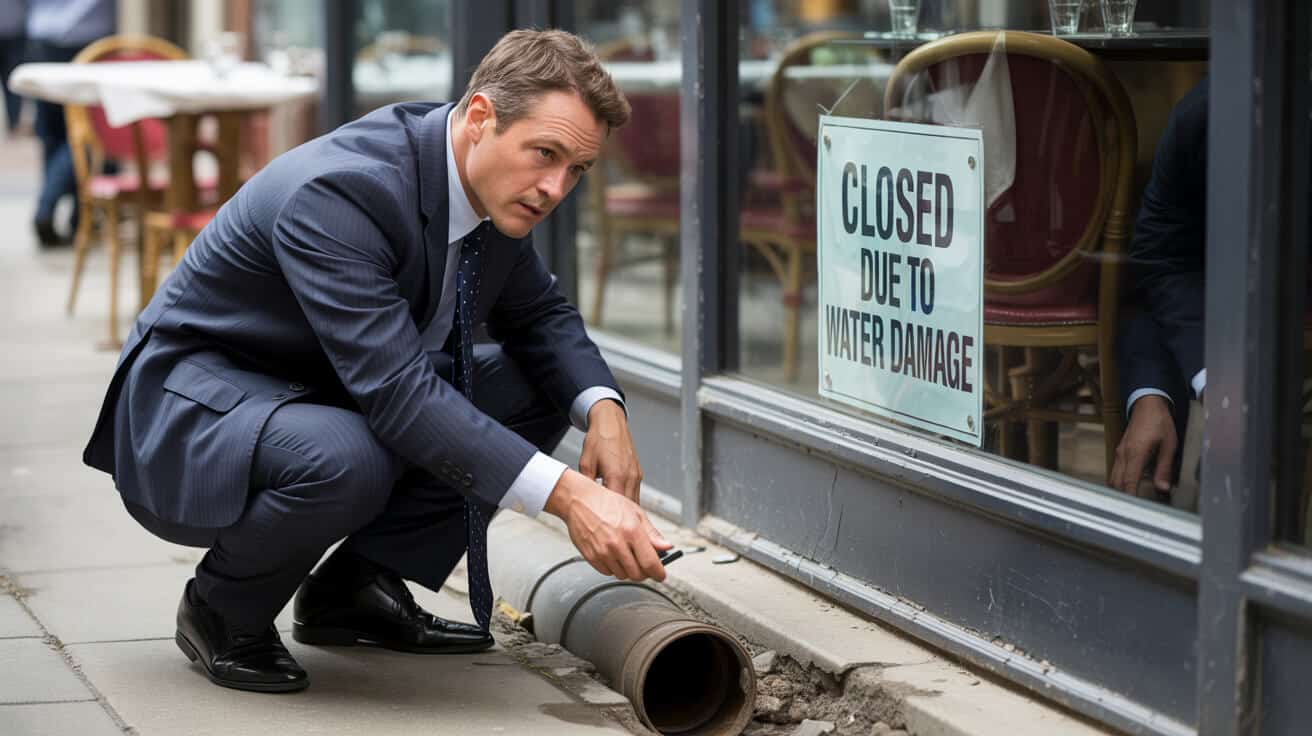
More landlords are starting to see Home Emergency cover as worthwhile. Why? Because the cost and disruption of a major plumbing claim goes far beyond the immediate crisis.
Home emergency policies buy you time, not a blank cheque. They solve the first 4 hours—not the aftermath.
This cover dispatches a vetted plumber, often within hours, to isolate the leak, stop flooding, and make the property safe. But that’s where promised fixes usually end.
What’s Included:
- Callout and “make safe” repairs: Rapid isolation and containment, stopping active leaks or dangerous overflows ([homeserve.co.uk](https://www.homeserve.co.uk/insurance-cover/landlords-comparison?utm_source=openai)).
- Short-term restoration: Ensures the property is at least habitable—often a temporary patch, not a long-term fix.
- Some policies include overnight accommodation: Only premium tiers offer short-term tenant relocation ([directline.com](https://www.directline.com/landlord-insurance?utm_source=openai)).
What Still Falls to You:
- Restoration and cosmetic repairs: Once the crisis calms, you deal with new carpets, painting, replacements.
- Permanent pipe or part replacement: The technical repair beyond “making safe” is almost always the landlord’s cost ([policyexpert.co.uk](https://www.policyexpert.co.uk/landlord/landlord-home-emergency-cover/?utm_source=openai)).
- Trace & Access or appliance failure: Not typically included in Home Emergency policies—add these if you worry about hidden leaks or boiler faults.
The Key Principle
Emergency cover is there to avoid disaster and demonstrate “reasonable care”—not to eliminate your responsibility for full repair and compliance.
How to Document a Plumbing Disaster to Be Claims-Ready
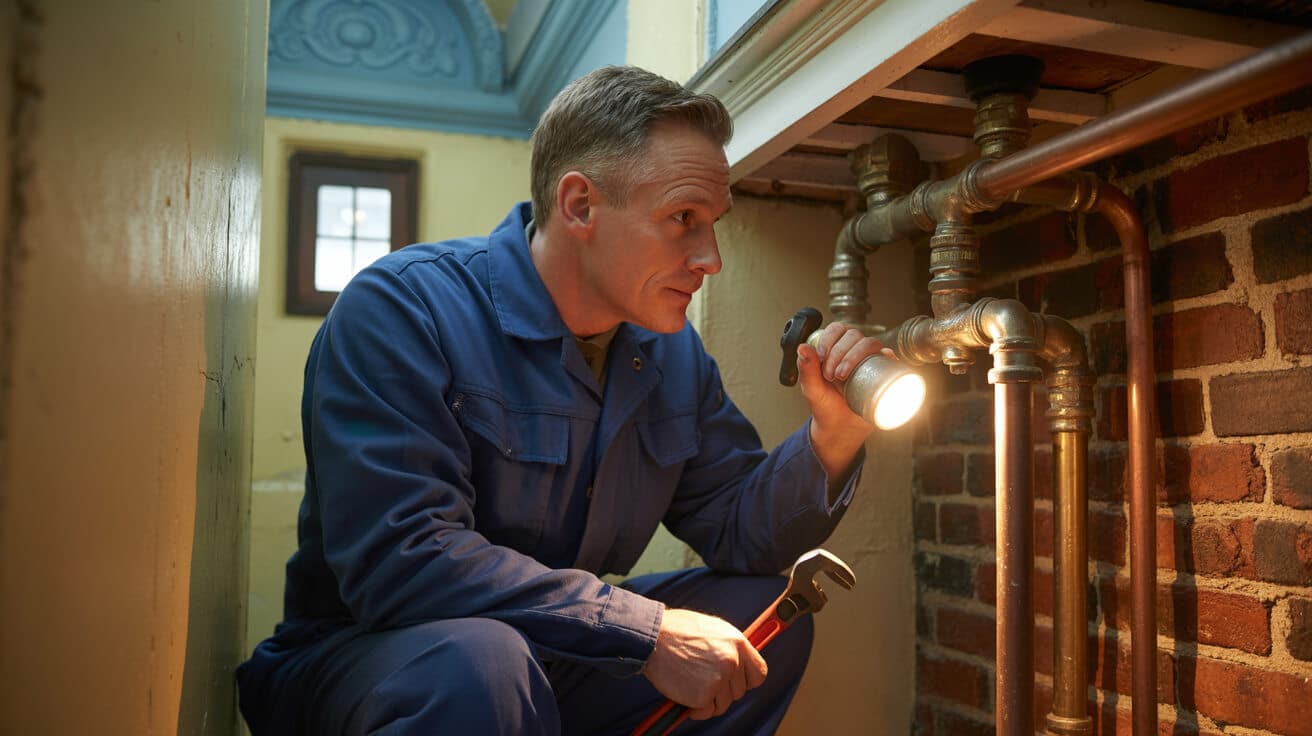
Insurance is a trust game. The more organised your records, the more credible you become. Sloppy, missing or delayed documentation is why claims fail—no matter how desperate or urgent your tenant’s situation.
If it’s not in writing, and timestamped, it didn’t happen as far as your insurer’s claims handler sees it.
Hector Gauge’s Six-Step Proof Path
- Immediate Isolation: Document who shut off the mains and when. Snap a photo of the valve or leak as-found.
- Photo Evidence: Log clear, timestamped images of all visible water, parts, the wider area, and fix attempts.
- Tenant Reporting Trail: Every notification from tenants must include a time, date, brief written description, and ideally a photo.
- Qualified Trades Only: Always use WRAS, WaterSafe, or G3-verified engineers, and save their ID or certification.
- Keep Every Receipt and Certificate: Payments, fix logs, compliance forms—organise them by date and property.
- Summary Dossier: Store a concise “case file” with event-to-resolution detail (dates, actions, professional proof, photo evidence).
Power Portfolio Move:
- Use cloud-based apps or logbooks to consolidate all repairs, certificates, and tenant reports. When insurers see this, disputed claims resolve much faster—and more often in your favour.
Where Do Most Plumbing-Linked Landlord Claims Go Wrong?
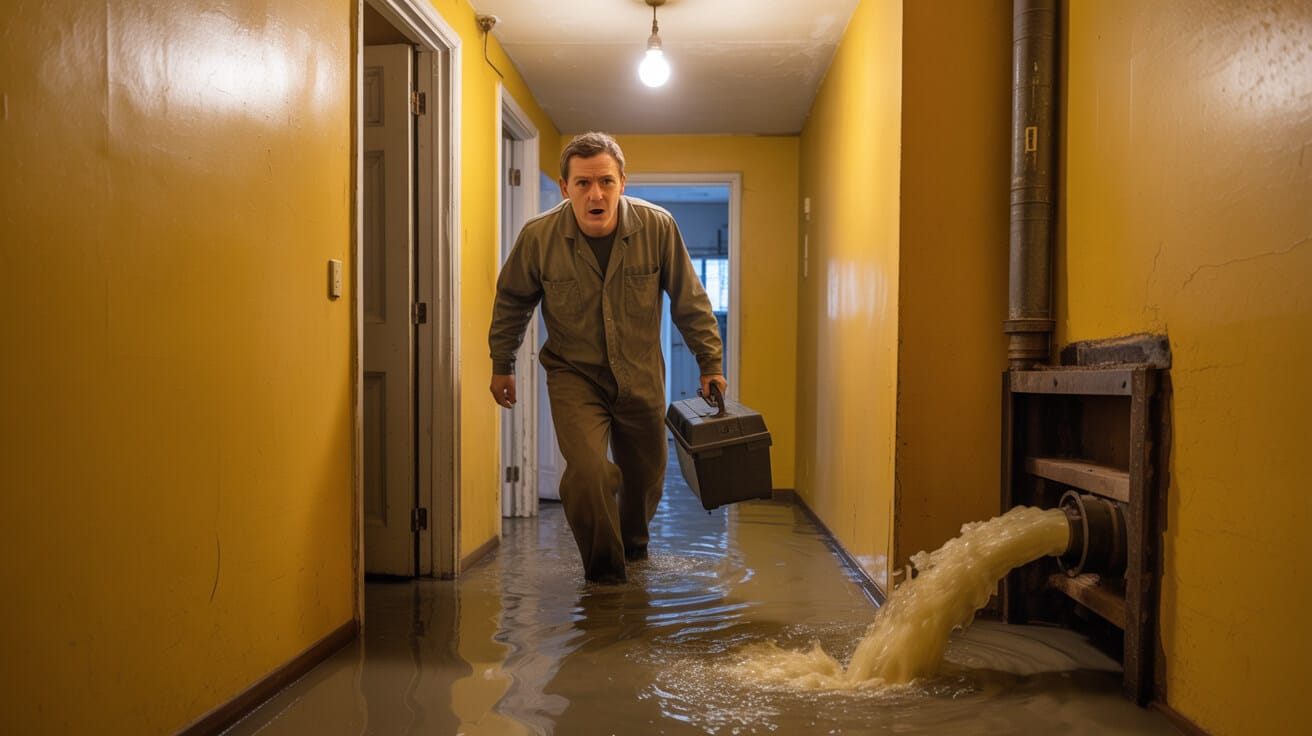
Mistakes in documentation, skipped add-ons, cash-in-hand repairs, and “mate” jobs are the real reasons landlords get burned—not the specifics of the leak or burst pipe. The system is designed to reward compliance and shut down payouts where it finds doubt.
You can plug every leak except a weak audit trail. That’s where most claims run dry.
Patterns Behind Denied Claims
- No “Trace & Access” cover: Forced to fund the hunt for the pipe yourself ([landlordinsuranceservices.co.uk](https://www.landlordinsuranceservices.co.uk/news/trace-and-access-cover-guide?utm_source=openai)).
- Boilers/appliances not insured: Any fault there is instantly excluded unless you’ve bolted on breakdown protection ([comparethemarket.com](https://www.comparethemarket.com/home-insurance/content/boiler-cover-for-landlords/?utm_source=openai)).
- Repairs by non-qualified or unregistered trades: Insurers treat these as amateur fixes, reason enough to deny a claim ([watersafe.org.uk](https://www.watersafe.org.uk/consumers/why_use_a_wras-approved_plumber/?utm_source=openai)).
- Gaps in tenant response time: Delayed or missing reports from tenants are seen as evidence of neglect ([nrla.org.uk](https://www.nrla.org.uk/news/landlord-insurance-make-a-claim?utm_source=openai)).
Essential Systems for Claims Resilience
- Log every tenant repair request and engineer visit—digital, time-stamped, with photos.
- Keep WRAS/WaterSafe/G3 docs on file for all works—show you used the right trades.
- Confirm your policy includes critical “extras” like Home Emergency and Trace & Access.
- Store receipts, certificates, and photos in a central, sortable file. One missing piece is often the difference between paid and refused.
Can Better Tenant Reporting and Maintenance Systems Really Make a Difference?
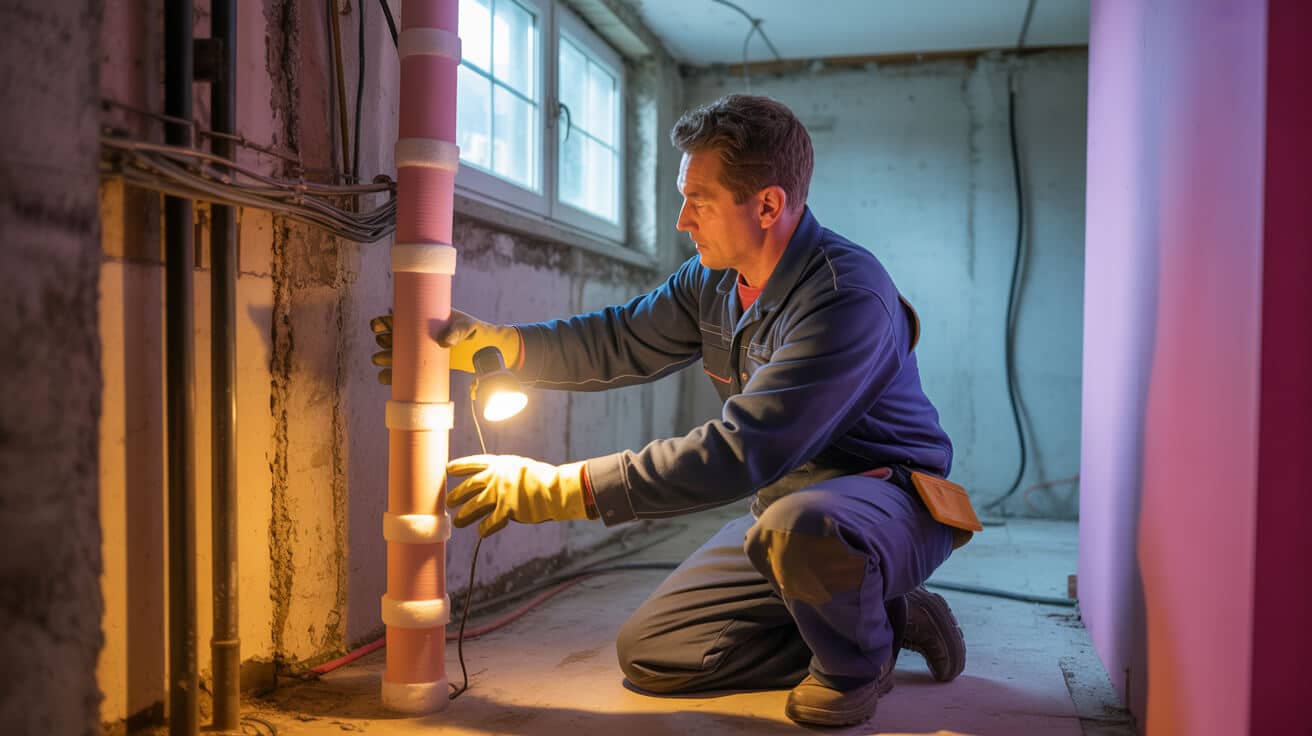
The industry’s moving away from “he said, she said.” Insurers trust timestamped data, not debates. A transparent, streamlined reporting process is no longer a nice-to-have for landlords—it’s the only way to ensure speed, compliance, and future insurability.
Audit trails are your evidence of diligence—and the antidote to claim disputes.
Quick Wins for Landlords and Agents
- Train tenants to use a digital form or app for maintenance—include mandatory photo uploads and automatic time logging.
- Record every trade appointment, inspection, and fix; nothing is off the record.
- Review, cross-reference and close the loop at every property inspection.
- Use WRAS-compliant specialists, like Plumbers 4U, whose handover packs include photographic proof, engineer credentials, and digital certification every time.
For Portfolio Landlords:
- Set automated reminders for annual audits and compliance reviews.
- Digital “asset logs” cut through admin and deliver instant document bundles for insurance handlers—no hunting, no waiting.
What Are the Typical Insurance Policy Exclusions Landlords Discover Too Late?

The biggest losses come not from the leak, but from discovering—after the event—that your insurance never would have paid out. Insurer “red lines” run deeper than most realise, hidden under small print and the assumption that all plumbing is equal.
Prevalent Policy Exclusions
- Pre-existing issues: Insurers will not cover rust, aged systems, or anything that “should have been dealt with before.”
- Delayed or slow response: Failing to spot or report an issue rapidly tends to void claims.
- Unqualified fixes with no paperwork: Anyone without WRAS, WaterSafe, G3, and a receipt leaves you exposed ([watersafe.org.uk](https://www.watersafe.org.uk/consumers/why_use_a_wras-approved_plumber/?utm_source=openai)).
- Unselected extras: If you didn’t tick Trace & Access or Home Emergency, that’s used to reject payment, even if the repair itself is valid.
You can only claim what you can prove. Insurance audits are harsh on hindsight but reward documented foresight.
How to Audit Your Readiness
- Schedule annual compliance checks with certified engineers—never skip a property.
- Insist on full WRAS and G3 paperwork for every hot water or pressurised system.
- Demand digital logs—plain paper and memory fade, but PDFs and photo logs endure.
- Pre-select all “bolt-on” covers you might conceivably need—especially for older properties.
Real Stories: Why One Landlord Got Paid—and the Other Didn’t
Paid Out: The London Fast-Fix
A London property manager faced a classic winter burst. Tenant pinged photos within minutes. Plumbers 4U attended by noon. Their WRAS-compliant repair, G3 safety certificate, and cloud-shared maintenance file let the insurer wave through a payout. Tenant rehoused, all costs covered.
Rejected: The Manchester Miss
Manchester. Small leak appeared months before. Landlord attempted a DIY fix, kept no log, used “mate rates” with no receipt, and no qualified engineer. Insurer flagged the failure as avoidable, cited lack of tenant notification/time lag, and denied the claim. Result: over £8,000 in self-funded repairs—and a marked property file for higher future premiums.
Success wasn’t luck or location—it was compliance, evidence, and speed.
This isn’t about bureaucracy—it’s about building your own safety net. The habits that cost little—logging, photo-proof, audit trails, using qualified trades—are the difference between a four-figure expense and a “yes” from your insurer.
Take Control: Book a Plumbing Compliance Audit and Shield Your Future
Landlords, letting and managing agents, property companies—there’s a direct path from compliance and process to protection and peace of mind. Don’t scramble after a claim fails. Fortify your audit trail, book your annual checks, and insist every repair meets WRAS and WaterSafe standards.
Regret always costs more than prep. Use the next quiet spell to build your insurance defence now.
- Book a systems audit and pre-claim readiness check with Plumbers 4U.
- Every job is digitally logged, WRAS and G3-certified, and delivered with timestamped photo proof.
- Letting and property agents: leverage our bulk compliance services to keep multiple properties protected, insurable, and reputation-safe ([landlordtoday.co.uk](https://www.landlordtoday.co.uk/breaking-news/2023/11/plumbers-4u-launches-bulk-services?utm_source=openai)).
Defend your asset, your income, and your future. Call Plumbers 4U today—before the next burst pipe writes its own verdict.
Frequently Asked Questions
What determines if water damage from plumbing is actually covered by UK landlord insurance?
Water damage is only insured if it results from a sudden, unforeseen event—like a pipe bursting overnight, a failed supply hose, or a tank letting go and flooding your building. UK insurers set a strict threshold: the incident must be abrupt, visible, and outside your control for your claim to be accepted. Water creeping in through old joints, corrosion that’s been forming for months, or drips neglected over time are classified as “wear and tear” and rejected by most policies.
Sudden floods ignite your cover—slow leaks, overlooked maintenance, and ageing pipes leave landlords and managers shouldering the costs.
Most policies protect structural elements—floors, ceilings, walls, and landlord-supplied fixtures—when hit by one of these rapid failures. But gradual damage, even when it’s discovered dramatically, is nearly always excluded. Emergency add-ons may help if, for example, an internal pipe blocks and causes overflow, but that support ends if the incident relates to an external supply or shows evidence of long-term decay. Insurers place major weight on documentation: keep engineer reports, date-stamped photo logs, service receipts, and clear installation records for every upgrade. These aren’t just admin—they’re your proof of due diligence if an “escape of water” event ever triggers a dispute.
Which water incidents do insurers usually accept—and where do they draw the line?
- burst pipes, failed tanks, or suddenly split supply hoses—full cover
- Bath, WC, or appliance overflows that flood the property without warning—covered
- Sudden, severe leaks from new(ish), regularly serviced systems—covered
- Blocked internal drains, but only when damage hits property and your policy includes emergency response
- Exclusions: slow seeping joints, corroded or scaled pipes, neglected leaks, damage from exterior drains or public mains
Why does “wear and tear” so often derail landlord insurance claims for plumbing?
Insurers expect you, as a property owner or manager, to spot and address ageing pipes, scaling, rust, or minor leaks before disaster strikes. If evidence shows that dampness, corrosion, or perished seals went unaddressed, the loss is considered preventable—landing it outside your claim’s safety net. The “wear and tear” clause is a primary tool for loss adjusters to reject claims: if they see that a leak or failure was building up slowly, or catch a gap in your recent maintenance records, the event rarely passes the “unforeseeable” test.
Claims usually fail not because insurer rules are unclear, but because ignored green stains, stale damp patches, or missing service logs are obvious red flags.
Current best practice demands rigorous maintenance logs and digital records—boiler services, pipe checks, and periodic water treatment are all part of the trusted landlord’s toolkit. The clock never resets on “duty of care”: adjusters cross-reference the last check-up, engineer credentials, and what you did about prior warning signs. Show clearly that you act before things go wrong, not just after, and you dramatically reduce the odds of being declined when you need cover most.
What triggers a “wear and tear” exclusion?
- Green stains, powdery residue, or visible corrosion left untreated
- Layers of limescale or mineral deposits around plumbing joints
- Ageing pipes or seals lacking evidence of recent replacement or maintenance
- Damp or discolouration spreading over time instead of a one-off mark
- Digital records missing for over a year, especially for high-risk fittings
How can maintenance logs tip the odds in your favour?
- Document every system service, repair, and engineer visit with dates, part codes, and before/after images
- Use only WRAS-approved, G3-certified, or WaterSafe-accredited engineers for significant plumbing and heating jobs
- Attach certificates and digital copies of reports directly to a property-specific log (cloud-based is best)
Which emergency steps most powerfully safeguard a plumbing insurance claim?
Acting fast is essential, but being systematic in your response is what truly preserves your claim rights. Shut off water at the internal stopcock as soon as trouble starts, and if there’s a risk to electrics, isolate power as well. Before any drying or deconstruction, capture high-quality evidence: time-stamped photos and videos of the leak’s source, spread, and every asset at risk. This unedited record anchors your claim’s credibility and will be your primary defence against rejections based on “unproven cause” or “insufficient evidence.”
Notify your insurer immediately, ideally while the incident is still developing, and follow their process for approved repairs. Use only engineers or contractors on your insurer’s preferred list if possible. Every receipt, compliance certificate (WRAS, G3, WaterSafe), fix summary, and communication should be logged digitally against the property address—insurers now routinely check for this level of audit trail before validating payouts. If the issue requires breaking open a wall to “trace and access” a hidden problem, get insurer approval in writing before proceeding.
Your coverage is built as much on your reaction and records as on the wording of your policy—document everything, every time.
Emergency insurance checklist for landlords and managers
- Immediate shut-off of water and, if necessary, electricity
- Timely, detailed photo and video evidence—prior to any repair
- Prompt insurer notification using dedicated hotlines or apps (not email unless instructed)
- Secure written approval for major “trace and access” work
- Employ insurer-preferred engineers, save invoices, and file all compliance documents instantly
Table: Emergency actions mapped to claim outcomes
| Action | Outcome |
|---|---|
| Evidence before repair | Proves event’s suddenness, makes claim stronger |
| Notification within 24h | Avoids the most common “missed window” denial |
| Use insurer-approved pro | Reduces disputes over quality/compliance |
| Upload every document | Accelerates payout, lowers hiccup risk |
How do digital compliance logs and accredited engineers shift landlord claim outcomes?
A fragmented paper trail and anonymous contractor rarely inspire confidence in insurers—a digital compliance regime does. By insisting on WRAS, G3, or WaterSafe engineers for all major works, and linking each repair, service, or upgrade to a digital logbook (including date, part numbers, certificates, and engineer identity), you eliminate the “unknowns” that drive claim suspicion. Large portfolios now leverage cloud-based platforms for every fix, service, handover, and inspection, keeping the full job history a click away for both managers and auditors.
A transparent digital archive isn’t just audit protection—it’s a reputation magnet for lenders, partners, and premium tenants.
This approach shields you against repeat disputes, accelerates claim turnaround, and gives you instant visibility of compliance across every address. You also catch maintenance gaps before renewals, and can spot patterns (like recurring valve failures) long before they become costly emergencies. The richer your digital evidence, the more claims adjusters treat you as “best in class.” For new investments, these records can even strengthen your valuation and position at sale.
Essential digital logbook fields
- Engineer name, qualification, and scheme ID for each entry
- Part number, manufacturer, and spec of any fitted component
- Uploads of every before/after photo and compliance certificate within 24 hours of job completion
- Service/maintenance events tracked chronologically and by location
- Export or live-share function for insurer, agent, or lender review
Where does tenant behaviour or “malicious damage” fit in today’s water loss coverage?
Tenant-related losses—whether accidental, neglectful, or outright malicious—fall into insurer “grey zones.” Sudden pipe bursts reported promptly by tenants are usually covered; slow leaks, ignored overflows, or intentional misuse (like wipes blocking drains) are almost always excluded unless you’ve purchased an explicit “malicious damage” extension. Insurers scrutinise tenancy documentation: clear lease clauses about leak reporting, signed tenant handovers, and time-stamped inspection records. Larger landlords and managing agents typically require comprehensive move-in/move-out photo series, historic logbooks, and formal reminders of responsibilities around water systems.
The clarity and regularity of your inspections is the line between insured peace of mind and costly legal headaches.
Protect yourself by building tenant accountability into contracts, reminders, and your tech stack. Consider specialist landlord insurance that couples liability, legal support, and malicious damage extensions with added layers like rent and legal cover—especially when managing multiple units or hands-off portfolios. This layered approach rebalances the risk-sharing equation and signals professionalism to underwriters.
Table: Insurer response to tenant-triggered incidents
| Tenant Scenario | Typical Payout? |
|---|---|
| Sudden/accidental burst, fast report | Yes, usually |
| Persistent leak ignored, slow report | No—“wear and tear” or neglect |
| blocked drain from misuse | No, unless accidental/rare |
| Malicious damage add-on purchased | Sometimes, scope limited |
| Routine small unreported spillages | No, insurer almost always declines |
How to harden your claim position against tenant-linked risks
- Present move-in, move-out, and mid-tenancy inspection logs with images
- Issue and require receipt of tenant guidance on leaks and blockages
- Set scheduled check-ins and digital reminders tied to each property
- Store all communication securely in your compliance archive
What’s the most effective way to combine insurance types and plumbing care—for true portfolio protection?
No single insurance product shields your property from every plumbing and water risk. The most successful landlords, agents, and commercial portfolio owners layer buildings, landlord, and home emergency insurance—then link all repairs, audits, and compliance to a digital, shareable platform maintained by accredited engineers. Buildings insurance anchors the structure; landlord policies cover unique risks like rent loss, liability, and compliance failures; emergency or “trace and access” add-ons guarantee fast response and evidence-based restoration.
But none of these policies delivers unless you have the digital audit trail and compliance record ready when an event occurs. Best-in-class plumbing support means certified engineers, evidence of every visit, and proactive system checks well beyond legal minimums. This strategy not only lowers premiums and unlocks faster claim processing, but boosts your credibility with lenders, tenants, and insurers alike.
Leaders see insurance as a web of risk reduction—backed by proof, not promises.
Regular compliance checks, WRAS-compliant repairs, and digital job logs keep your properties “claim ready,” whether for a single buy-to-let or a multi-property holding. By documenting every step, upgrades become effortless, regulatory standards are always met, and disasters become recoverable events—not business-ending threats.
Multi-layered protection at a glance
| Insurance Layer | What It Covers | What It Misses |
|---|---|---|
| Buildings/structural | Structure, flood, fire | Contents, urgent tenant support |
| Landlord policy | Rent loss, liability, compliance | Emergency callouts, persistent defects |
| Emergency add-on | Burst response, pipe/blockage fixes | Long-term restoration, documentation |
| Digital audit/servicing | Compliance proof, audits | Only valid with disciplined upkeep |
For home owners, landlords, letting agents, commercial property owners, and local authority managers across the UK—Plumbers 4U delivers WRAS-approved repairs, real-time job logs, and compliance-first plumbing services designed for hassle-free claims and higher property value. Protect your rental, boost credibility, and minimise risk—book your digital audit, emergency repair, or maintenance check with Plumbers 4U today.


